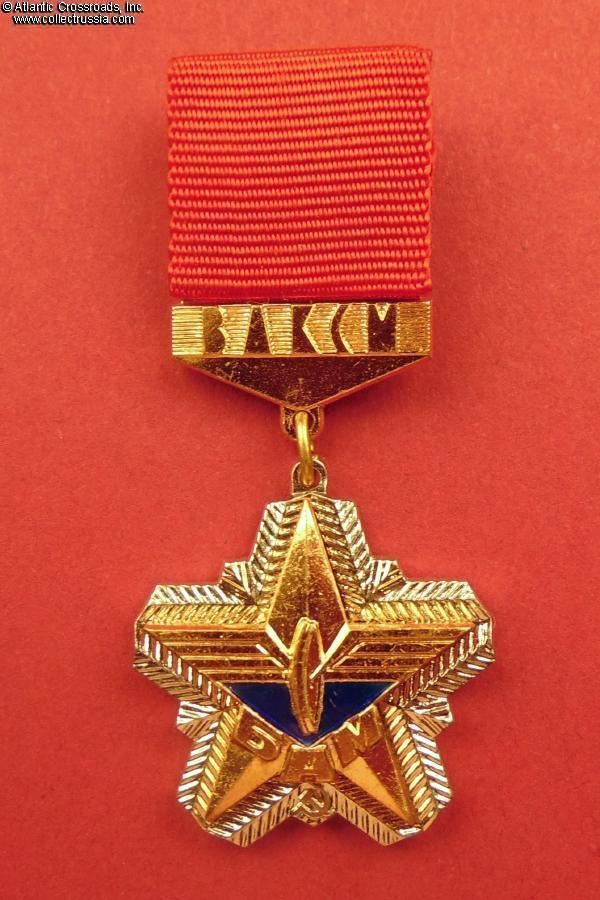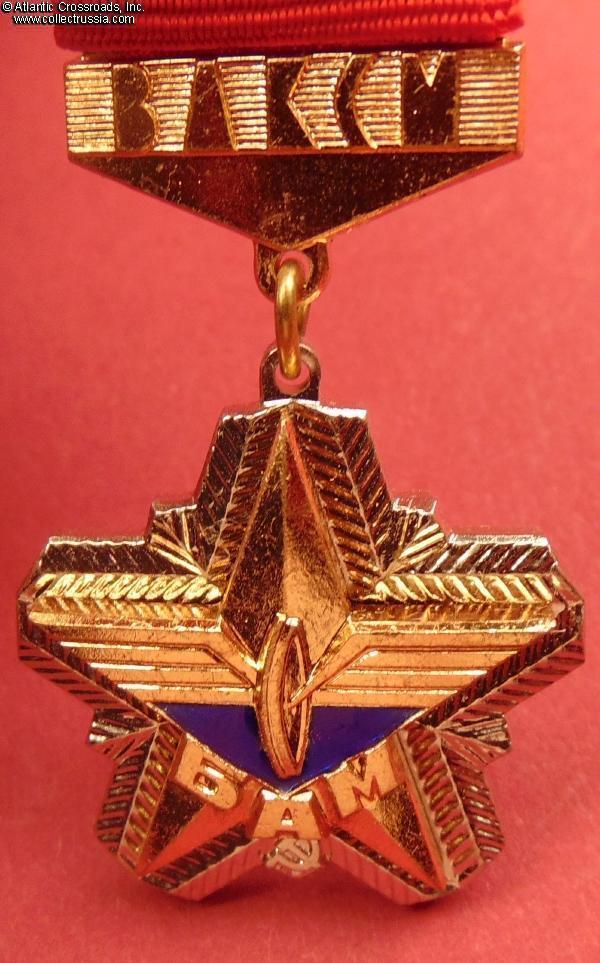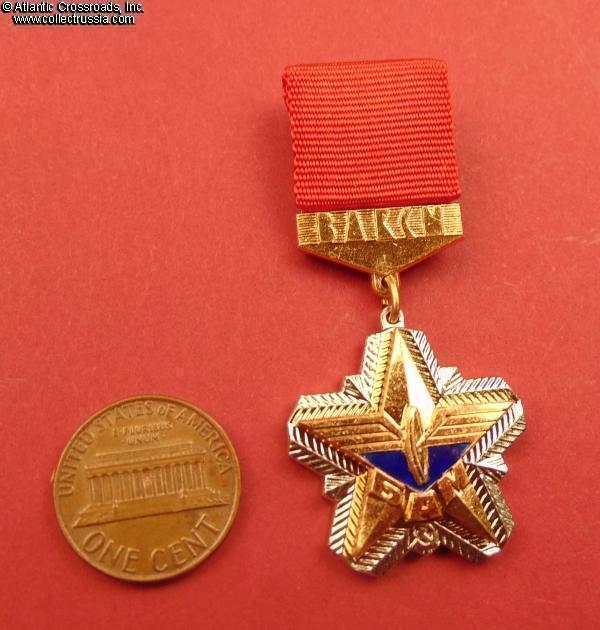
VLKSM Central Committee Medal (Honorary Badge) to a Participant of the Construction of the Baikal-Amur Railroad, 1978-1991.
In gilded and nickel-plated brass and enamel. Medallion is of riveted two-piece construction, measures 28.7 mm in height (incl. eyelet), 26.7 mm in width; weighs 12.3 g not including the suspension and connecting link. The reverse of the suspension device has the raised late-style logo of the Leningrad Mint below the pin.
In excellent, near mint condition. The finish and enamel are pristine. The ribbon is perfectly clean.
The badge was issued relatively sparingly by the Central Committee of Komsomol and is quite scarce compared with the other top Komsomol decorations o
In gilded and nickel-plated brass and enamel. Medallion is of riveted two-piece construction, measures 28.7 mm in height (incl. eyelet), 26.7 mm in width; weighs 12.3 g not including the suspension and connecting link. The reverse of the suspension device has the raised late-style logo of the Leningrad Mint below the pin.
In excellent, near mint condition. The finish and enamel are pristine. The ribbon is perfectly clean.
The badge was issued relatively sparingly by the Central Committee of Komsomol and is quite scarce compared with the other top Komsomol decorations of late Soviet era. Because of its peculiar design with the edges depicting spruce needles, Russian-speaking collectors call it Snezhinka ("Snowflake"). The railroad, usually referred to by its acronym BAM, provided a conduit from the inner parts of the Soviet Union to the Pacific thus serving as a strategic substitute for the overloaded and more exposed Trans-Siberian Railroad. The ambitious undertaking required an enormous amount of time and resources, becoming an obsession for generations of Soviet leaders from Stalin to Brezhnev. Although it was declared a Komsomol Shock Construction Project, the lion share of the construction was done not by idealist youth but by forced laborers and enlisted conscripts of the military construction corps. Even with its ample use of free labor, BAM became the most expensive infrastructure project in the entire history of the Soviet Union.
/See Principal Badges of Komsomol. Reference Catalog, page 68, fig. 9.7/
$170.00 Add to cart






